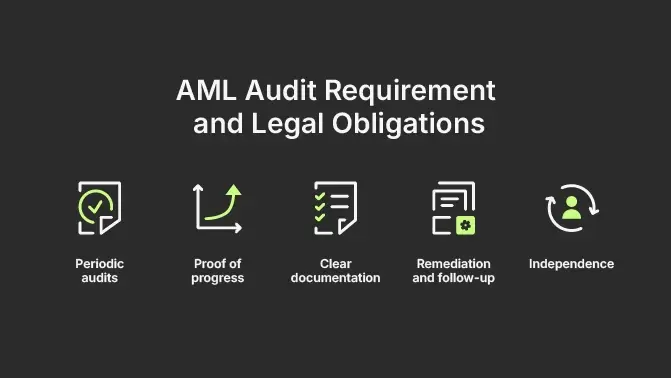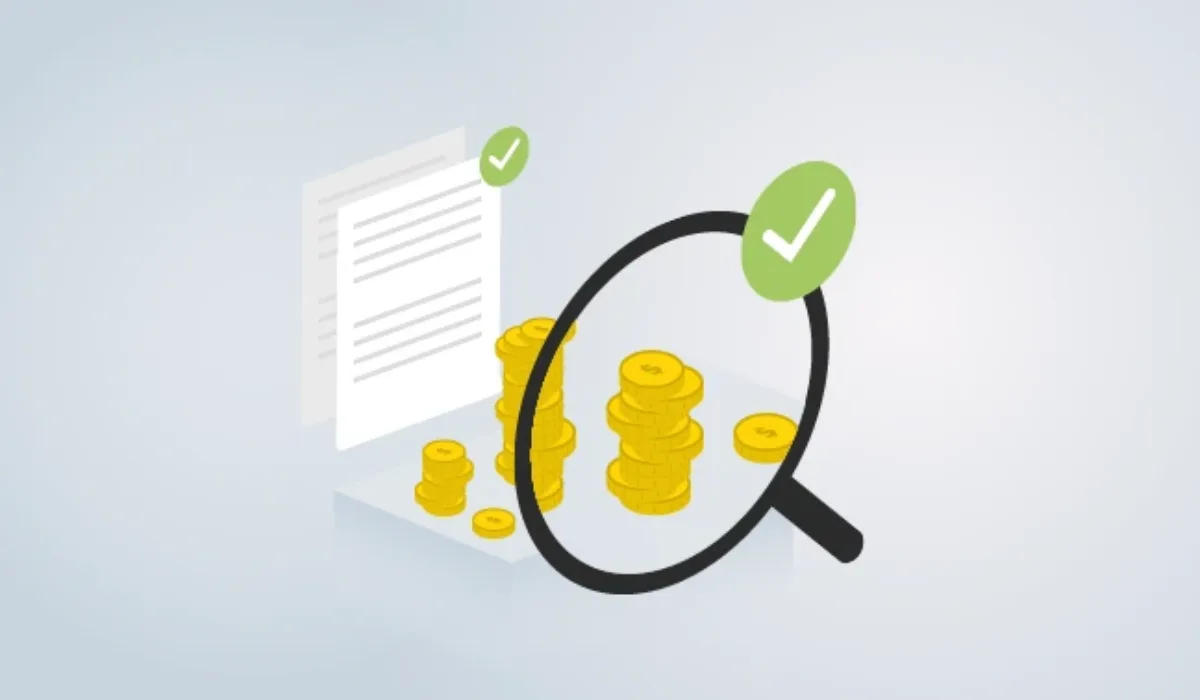Anti-Money Laundering (AML) audits are a cornerstone of financial integrity. They serve as a structured evaluation of how well an organization’s AML framework is functioning and whether it complies with legal and regulatory obligations. In an environment where regulators are raising expectations and financial crime risks continue to evolve, AML audits are an essential AML compliance step for financial institutions and other businesses.
AML Audit vs. AML Compliance Check
It’s easy to confuse an AML audit with an AML compliance check, but the two are distinct.
Compliance checks are ongoing reviews conducted internally, often by compliance teams, to monitor daily operations and ensure AML policies are being followed. They are continuous and practical in nature.
AML audits, on the other hand, are formal, periodic, and usually more comprehensive. Audits examine the entire AML program: policies, controls, procedures, and outcomes to determine effectiveness and regulatory alignment.
Think of compliance checks as real-time monitoring and audits as the periodic “deep dive” health check.
Who Needs to Perform an AML Audit
Any business subject to AML regulations must take part in the AML audit process. This includes banks, fintechs, payment providers, insurers, gaming operators, real estate firms, and other financial institutions.
Even smaller organizations with lighter obligations benefit from an independent audit. An AML audit helps identify weaknesses before regulators or criminals do. Firms that conduct independent testing strengthen their defenses and show regulators that they take AML compliance seriously.
AML Audit Requirements and Legal Obligations

Most countries require firms to test their AML programs on a regular basis. Rules vary, but the expectation is the same: companies must prove their AML framework is not just policy on paper but works in practice.
In the European Union, the AML directives require AML independent testing as part of compliance programs. In the United States, the Bank Secrecy Act sets the same requirement. Other regions have adopted similar models to assist financial institutions in keeping standards consistent.
Key obligations usually include
Periodic audits
Many regulators expect an AML audit process once a year. Some allow a longer cycle for low-risk firms, while high-risk businesses may need to audit more often.
Independence
The independent audit cannot be run by the same people who handle day-to-day AML operations. This ensures objectivity. Independence is achieved either by using an internal audit team separate from compliance or by hiring external auditors to conduct independent testing.
Clear documentation
Audit results must be written in detail. Reports should outline findings, recommendations, and timelines for fixes. Regulators often ask to review this documentation during inspections.
Remediation and follow-up
When issues are identified, they must be fixed. Firms are expected to maintain a clear plan that shows how weaknesses will be addressed and when.
Proof of progress
Each independent AML audit should demonstrate continuous improvement. Regulators want evidence that earlier gaps were resolved and that AML programs are stronger than before.
Failure to meet these standards is serious. Penalties include fines, reputational harm, and stricter regulatory oversight. Financial institutions that neglect AML obligations face significant risks.
Who Conducts the AML Audit
An independent AML audit can be carried out inside the company or by an outside provider. The choice often depends on the size of the business, the level of risk, and regulatory expectations.
Internal audits
Large organizations often have an internal audit function that is separate from the compliance team. This group can review the AML program without being directly involved in day-to-day monitoring. Independence is critical. If the same people who manage compliance also audit it, the review loses credibility. Internal auditors are usually familiar with company systems and processes, which makes them efficient, but they need to document their independence clearly.
External audits
Some firms hire third-party specialists such as consulting firms or audit companies. External auditors bring a fresh perspective and broader industry knowledge. They can benchmark the program against other organizations and current best practices. Regulators tend to value external audits because they are harder to influence and provide an independent view. Smaller firms without an internal audit function often rely on external audits to meet their legal requirements.
Hybrid approaches
Many businesses use both. Internal audits provide ongoing oversight, while external reviews are scheduled every few years or after major regulatory changes. This mix balances efficiency with objectivity.
No matter who conducts the audit, the key is independence, expertise, and thorough documentation. An audit that appears biased or incomplete does little to reduce regulatory risk.
AML Audit Checklist: What Gets Reviewed
The exact scope of an AML audit depends on the size of the business, the type of services it offers, and the regulations it falls under. Still, most audits look at the same core areas.
Customer due diligence and KYC
Auditors check how the business verifies customer identity and collects required information for customer due diligence. They review onboarding procedures, risk scoring, and whether enhanced due diligence is applied to high-risk customers.
Transaction monitoring and suspicious activity reporting
The audit looks at how transactions are tracked. It asks if the system can spot unusual patterns, whether alerts are followed up properly, and if suspicious activity reports are filed on time and with enough detail.
Sanctions, PEP, and adverse media screening
Auditors test the watchlist screening process against current lists. They want to know if the business uses up-to-date sanctions databases, checks for politically exposed persons, and reviews adverse media. They also assess how often lists are updated and whether matches are resolved correctly.
Risk assessments and customer categorization
A good program classifies customers by risk level. The audit reviews the methodology behind this and checks if higher risk customers get closer monitoring. Weak or outdated risk models are a common finding.
Staff training and awareness
Training is critical. Auditors confirm whether employees receive AML training at hire and on a regular basis. They also check the content of the training and whether it matches the company’s risk profile.
Record keeping and data retention
Regulations require businesses to store customer data and transaction records for a set period, often five years or more. Auditors look for gaps in documentation, missing records, or storage practices that do not meet legal standards.
Governance, policies, and procedures
Finally, the audit reviews the company’s AML framework as a whole. That includes written policies, board oversight, roles and responsibilities, and how senior management is informed of risks.
Together, these areas give regulators and management a clear picture of whether the AML program is effective, compliant, and ready to respond to threats.
How to Prepare for an AML Audit
Preparation is critical to ensuring a smooth audit process. Key steps include:
- Keeping AML documentation up to date and easily accessible.
- Conducting mock reviews or internal compliance checks in advance.
- Ensuring staff are trained and aware of responsibilities.
- Reviewing remediation progress from previous audits.
- Engaging with auditors early to clarify scope and expectations.
Common AML Audit Findings and How to Avoid Them
Auditors often see the same problems across different industries. These issues show where AML programs tend to break down.
Incomplete customer risk assessments
Some firms do not assign proper risk ratings to every customer, or they fail to update risk scores when circumstances change. Without accurate assessments, high-risk clients may receive the same oversight as low-risk ones. To avoid this, businesses should set clear rules for assigning and updating risk levels and make sure risk assessments are linked to monitoring and due diligence.
Inconsistent transaction monitoring thresholds
Monitoring tools can generate too many false positives or miss suspicious patterns if thresholds are set poorly. Some companies leave default settings in place instead of tailoring them to their business model. A regular review of monitoring rules, informed by transaction data and risk appetite, helps reduce blind spots.
Gaps in sanctions or PEP screening
Audits often uncover screening tools that are not updated daily, or they find that flagged matches are not reviewed quickly. These lapses can lead to serious regulatory breaches. Avoiding them requires up-to-date lists, automated screening where possible, and clear escalation procedures for handling matches.
Outdated or insufficient staff training
Training is sometimes too generic or not refreshed often enough. Employees may not understand how money laundering risks look in their specific role. Good practice is to run role-based training at onboarding and at regular intervals, with updates whenever laws or risks change.
Poor record-keeping or missing audit trails
Incomplete documentation is one of the most common findings. Regulators expect clear records of customer identification, monitoring actions, and decisions made about suspicious cases. Businesses should keep records organized, accessible, and stored for the legally required period.
Avoiding these findings is not only about fixing individual gaps. It also requires a culture of compliance. That means management sets the tone, staff take their duties seriously, and controls are reviewed and improved on a regular schedule.
Internal vs External AML Audits
- Internal audits provide familiarity and ongoing oversight but may lack complete independence.
- External audits deliver fresh perspective, industry best practices, and greater credibility with regulators.
Most organizations benefit from a hybrid approach: continuous internal reviews complemented by periodic external audits.
AML and CFT Audits: Are They the Same?
AML (Anti-Money Laundering) and CFT (Counter Financing of Terrorism) audits are closely related. In practice, most audits cover both areas, as regulations often bundle AML and CFT obligations together. While AML focuses on preventing illicit funds from entering the system, CFT zeroes in on preventing the misuse of financial systems to fund terrorism.
Final Thoughts
Businesses that approach audits as opportunities for improvement, rather than box-ticking exercises, not only reduce regulatory risk but also build stronger, more resilient compliance frameworks.







